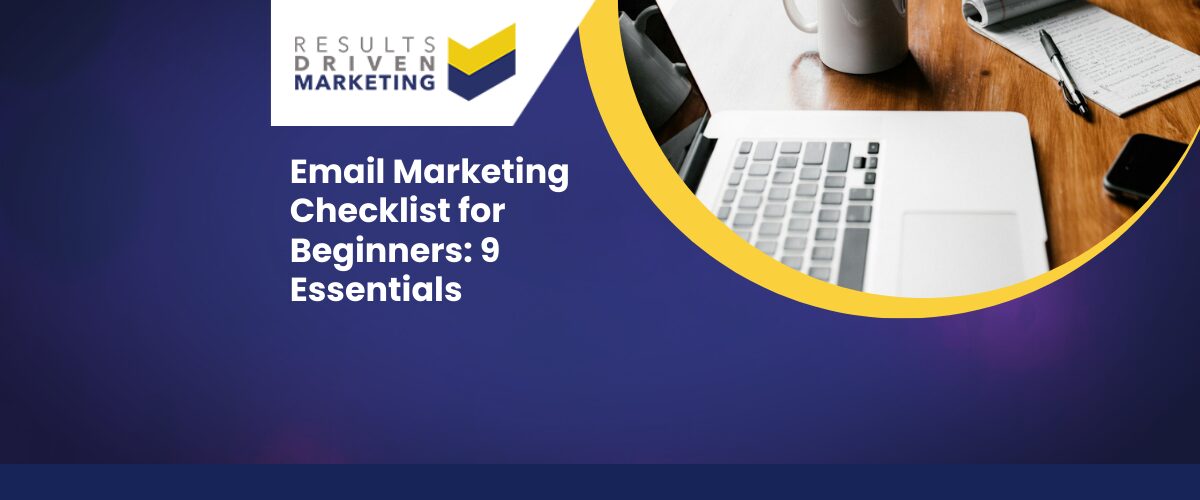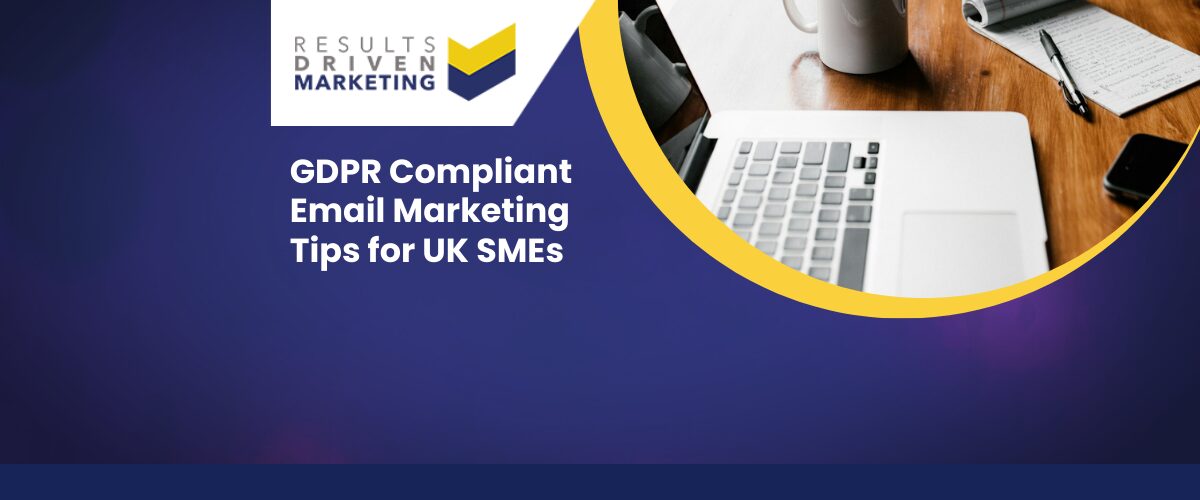
Email Marketing Checklist for Beginners: 9 Essentials
An effective email marketing checklist for beginners is the secret to sending campaigns that actually get results—especially if you’re a UK SME working with purchased B2B data.
Too often, emails are sent without clear goals, poor targeting, or messy formatting. The result? Low engagement, unsubscribes, or worse—being flagged as spam. And when you’re short on time or don’t have a dedicated email team, it’s easy to overlook the essentials.
This guide cuts through the noise and gives you exactly what you need to get started. Whether you’re launching your first cold campaign or simply want a better process, these nine steps will help you stay focused, compliant, and effective.
We’ve helped hundreds of businesses go from “just sending emails” to campaigns that open doors—and we’re sharing what works best. Let’s walk through the must-haves for every email you send.
Table of contents:
1. Define Your Goals and Audience
The first step in any email marketing checklist for beginners is knowing why you’re sending emails and who they’re for. Without this, even the best message can fall flat.
Start by asking:
-
What’s the goal of this campaign? (e.g. generate leads, warm up cold prospects, promote a new service)
-
Who are you targeting within your B2B list? (Job title, industry, location, company size)
By clearly defining both the objective and audience, you can tailor your messaging and content for better results. For example, a sales director in construction will expect something very different than a marketing manager in tech.
If you’re using purchased B2B data, filtering by role, sector, or geography gives you a strong starting point—and saves your emails from feeling generic.
2. Build and Segment Your List
Once you know who you’re targeting, the next step in the email marketing checklist for beginners is to organise your list properly.
Segmentation allows you to group contacts based on shared characteristics—so your emails feel more relevant and personal, even if they’re automated.
Effective segments for B2B email campaigns might include:
-
Job role or seniority
-
Industry or sector
-
Company size or turnover
-
Geographic region
-
Sales stage (cold lead, warm prospect, previous buyer)
Why does this matter?
-
Open rates improve when the email feels “for them”
-
Clicks and replies increase with relevant messaging
-
Spam complaints and unsubscribes decrease
-
Deliverability remains strong
Using clean, segmented email lists gives you an edge from day one.
3. Craft a Clear Value Proposition
Now that you’ve segmented your list, it’s time to sharpen your message. A clear value proposition is a must-have in any email marketing checklist for beginners—especially when sending to cold or semi-cold B2B contacts.
In simple terms: why should the reader care?
Think about what problem you solve or benefit you bring. Your message should answer:
-
What’s in it for them?
-
Why now?
-
Why you?
How to get it right:
-
Focus on outcomes, not features
-
Be brief and specific
-
Keep it relatable to the recipient’s role or pain points
Example: “Helping SME sales teams cut prospecting time in half with ready-to-use, targeted data.”
4. Write Headlines That Earn Opens
No matter how good your email is, it won’t matter if no one opens it. That’s why subject lines deserve a place in every email marketing checklist for beginners.
This is your first (and often only) chance to grab attention. In B2B email, where inboxes are flooded daily, your subject line must work hard.
Tips to improve open rates:
-
Ask a question
-
Highlight a benefit
-
Create curiosity or urgency
-
Stay under 50 characters
-
Match your brand tone (professional, not robotic)
Example: “Struggling to reach decision-makers this month?”
If your subject line fails, your content won’t get read—simple as that.
5. Create Scannable, Action-Oriented Content
Once your subject line gets the open, the content needs to deliver—fast. A key rule in the email marketing checklist for beginners is: make your message easy to skim and quick to act on.
Structure your emails like this:
-
Short paragraphs (1–2 lines)
-
Bullet points for key info
-
Bold highlights for emphasis
-
One main CTA (call-to-action)
CTA best practices:
-
Clear and benefit-led
-
Visible high and low in the email
-
Use phrases like “Book a call” or “See example data”
Good email content respects your reader’s time—and makes action easy.
6. Ensure Compliance and Deliverability
One of the most overlooked—but critical—items in an email marketing checklist for beginners is staying compliant and protecting your deliverability.
Whether you’re sending to prospects or clients, you must follow UK laws like GDPR. And if your emails aren’t hitting inboxes, nothing else matters.
Compliance Tips:
-
Identify your company clearly
-
Include a visible unsubscribe link
-
Justify the contact (e.g. legitimate interest for B2B)
Deliverability Best Practices:
-
Send from a branded domain
-
Avoid spammy formatting (caps, excessive punctuation)
-
Warm up your domain before large sends
-
Test your email layout and links before sending
Respecting inboxes keeps your messages landing and your reputation intact.
7. Set Up Automated Follow-Ups
Following up manually is one of the biggest time-wasters in B2B outreach. That’s why automation belongs on every email marketing checklist for beginners—even if you’re just getting started.
Automated follow-ups make sure you don’t leave leads hanging. They help you stay consistent, build trust, and increase replies without doing everything by hand.
A Simple Follow-Up Flow:
-
Email 1: Intro and value proposition
-
Email 2: Extra value or proof (e.g. case study)
-
Email 3: Soft nudge or alternate angle
-
Email 4: Final ask or offer to close the loop
Use time delays (2–5 days apart) and keep the tone friendly—not pushy. Automation done well helps you stay top-of-mind without becoming annoying.
8. Measure and Adjust
Tracking performance is where good campaigns become great. A smart email marketing checklist for beginners doesn’t stop at “send”—it includes regular review and refinement.
What to track:
-
Open rates (subject lines)
-
Click-through rates (content and CTA)
-
Replies and conversions (interest level)
-
Unsubscribes and complaints (messaging relevance)
How to improve:
-
A/B test subject lines and CTAs
-
Shorten or clarify emails with low clicks
-
Resegment lists showing low engagement
-
Optimise timing or frequency
Make review part of your monthly routine. Small tweaks compound into major wins.
9. Keep Improving Over Time
No checklist is complete without a reminder that email marketing is an ongoing process. For beginners, the key is to start strong—but also stay committed to improving as you go.
How to stay sharp:
-
Clean your list regularly
-
Refresh outdated content
-
Update targeting based on campaign performance
-
Learn from what works—and what doesn’t
Email success isn’t about luck. It’s about learning, adjusting, and repeating what works.
Common Mistakes Beginners Make with an Email Marketing Checklist
Even with a well-structured email marketing checklist, beginners often fall into the same traps that limit results. Spotting these early helps you avoid wasted effort and protects your sender reputation.
Overloading with Too Much Content
-
Long paragraphs and multiple CTAs overwhelm readers.
-
Stick to one clear message per email, supported by a single, benefit-led CTA.
Ignoring List Hygiene
-
Sending to old or unverified data increases bounce rates.
-
Clean your list regularly and use CTPS/GDPR-compliant B2B data.
Neglecting Mobile Optimisation
-
Over half of B2B emails are read on mobile.
-
Test subject lines, formatting, and CTA buttons on smaller screens before sending.
Forgetting to Test Before Sending
-
Broken links, spelling mistakes, or missing personalisation tags damage credibility.
-
Always send yourself a test email to check layout, links, and rendering.
Skipping Follow-Ups
-
Many leads reply after the second or third touch.
-
Build automated sequences into your process—don’t rely on one-off emails.
Why Choose Results Driven Marketing
At Results Driven Marketing, we understand that great campaigns start with great data—and a strategy that’s built around results.
Whether you’re using this email marketing checklist for beginners to launch your first campaign or refine your current process, we’re here to help you get more from your B2B outreach.
Why SMEs trust us:
-
Targeted email lists from 2,000+ UK sectors
-
Fast delivery—clean, campaign-ready data within 24 hours
-
Expert guidance on strategy, segmentation, and messaging
-
Compliance confidence with CTPS checks and GDPR-aware sourcing
Need help launching a smarter campaign? Contact us today.
Conclusion: Start Strong, Improve Fast
Email doesn’t need to be complicated—but it does need structure. This email marketing checklist for beginners is designed to give you a strong foundation, whether you’re starting from scratch or improving what you already send.
Recap the essentials:
-
Define your goals and audience
-
Build and segment your list
-
Craft a strong value proposition
-
Write subject lines that get opened
-
Make your content scannable and actionable
-
Stay compliant and protect deliverability
-
Use automation for consistent follow-up
-
Track results and adjust
-
Keep learning and improving
With these steps in place, you’ll build better campaigns, drive better results, and make every email count.
Need help sourcing accurate, segmented data for your next campaign? Contact us or buy email lists tailored to your audience and goals.
Results Driven Marketing
Helping UK SMEs go from bad data to better leads
📍 Newcastle | 📞 0191 406 6399 | 📧 hello@rdmarketing.co.uk
rdmarketing.co.uk





